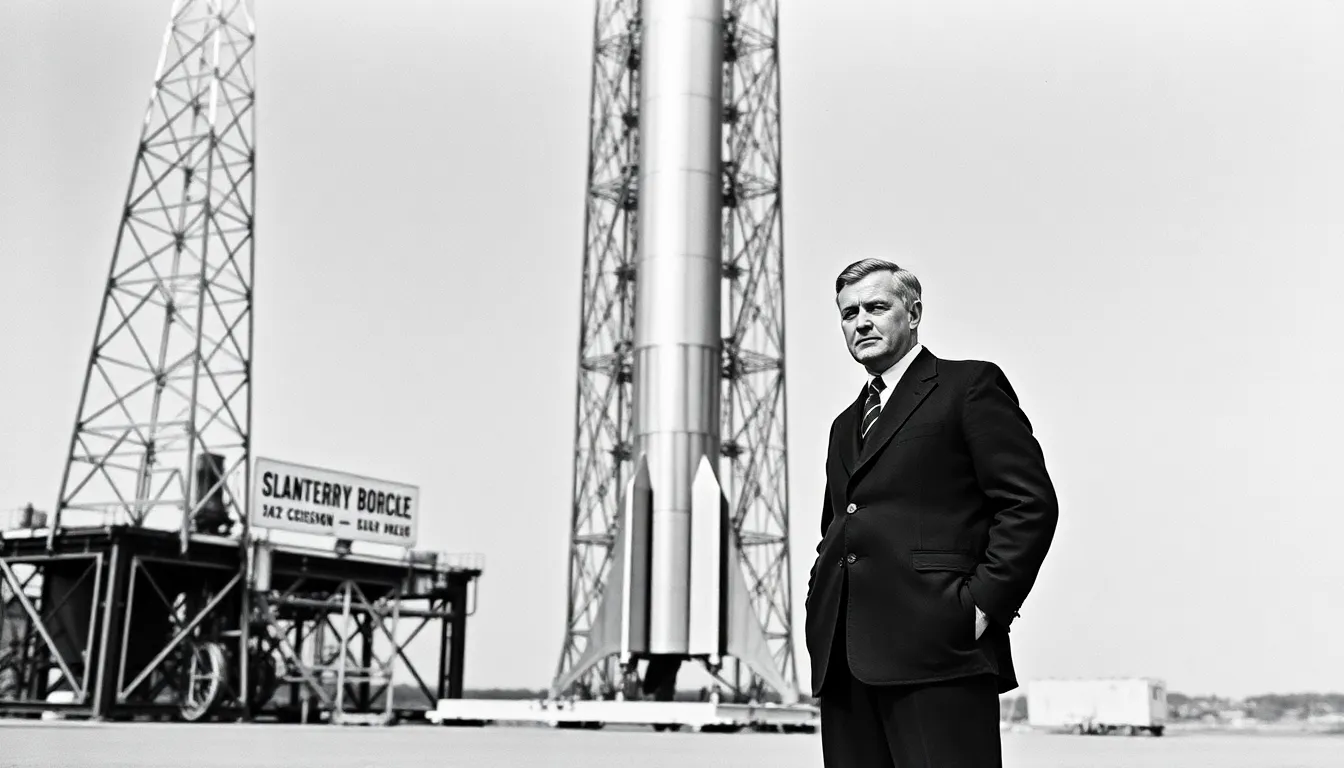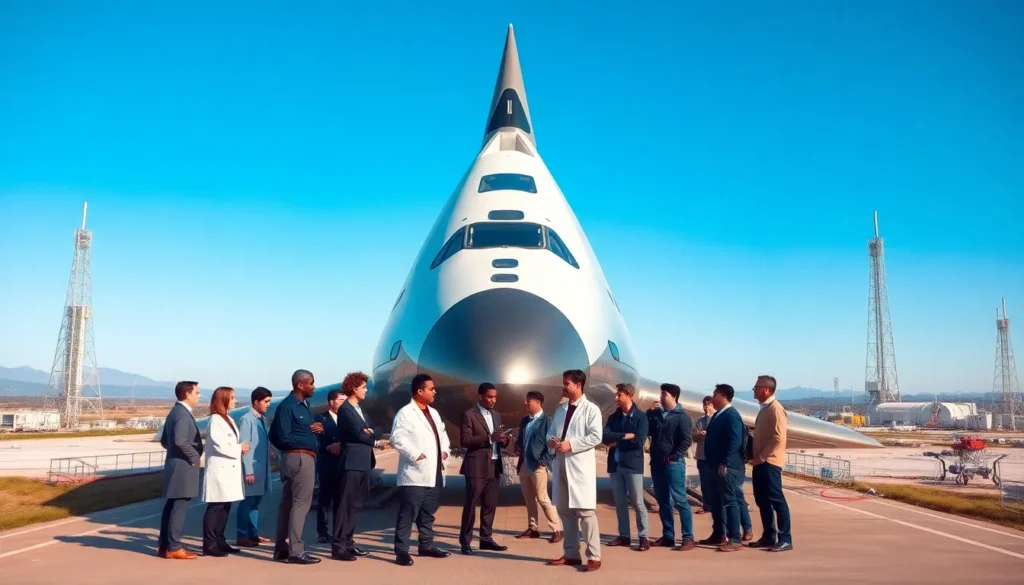Table of Contents
ToggleIn a world where binge-watching space documentaries is the closest most people get to interstellar travel, the future of space travel technology is nothing short of thrilling. Imagine zipping through the cosmos like a kid on a rollercoaster, but instead of screaming in terror, you’re marveling at the beauty of distant galaxies. With advancements happening faster than you can say “blast off,” space travel is no longer just for astronauts and science fiction enthusiasts.
Overview of Space Travel Technology
Space travel technology has advanced significantly, transforming journeys beyond Earth into accessible adventures. Innovations emerge in propulsion systems, spacecraft design, and life support systems. These technological breakthroughs make it feasible for private companies and space agencies to explore beyond low Earth orbit.
Reusable rockets represent a major shift in the industry. SpaceX’s Falcon 9 and Falcon Heavy spacecraft showcase how reusability decreases costs and increases launch frequency. Companies utilize these rockets to transport supplies to the International Space Station and enable commercial satellite deployments.
Active research focuses on advanced propulsion methods. Ion propulsion systems, for instance, offer improved efficiency over traditional chemical rockets. NASA’s Deep Space 1 spacecraft utilized this technology, demonstrating potential for future deep space missions.
Crewed spacecraft also evolve with new designs enhancing safety and comfort. NASA’s Orion spacecraft features robust life support systems and radiation shielding, preparing for missions to the Moon and Mars. Spacecraft manufactured by Blue Origin and Virgin Galactic prioritize passenger experience, ensuring comfort during suborbital flights.
Collaboration among space agencies and private enterprises fosters innovation. Partnerships enable sharing of resources and technology, resulting in more efficient mission planning and execution. Major players include NASA, ESA, and emerging companies like Rocket Lab and Astra Space.
Sustainable practices gain attention within space travel technology. Efforts target reducing space debris and employing eco-friendly materials for spacecraft construction. Utilizing green propellants and recycling in orbit reflects a conscious move toward an environmentally responsible approach to space exploration.
Advancements in communication technology enhance data exchange between Earth and spacecraft. High-bandwidth communication systems facilitate real-time interaction, allowing for quicker response times during missions. These improvements ensure astronauts remain connected to teams on Earth, enhancing mission success rates.
Historical Developments in Space Travel

Historical advancements in space travel technology reveal a journey marked by creativity and determination. Early efforts laid the groundwork for today’s sophisticated space missions.
Early Innovations
Wernher von Braun’s work on the V-2 rocket in the 1940s marked a significant milestone in rocketry. Robert Goddard’s experiments with liquid-fueled rockets during the 1920s established fundamental propulsion principles. These early innovations set the stage for future developments in space exploration. The Jet Propulsion Laboratory, founded in 1936, contributed to advances in guidance and control systems for rockets. These pioneering efforts, though often experimental, illustrated the potential of space travel and inspired later generations of engineers and scientists.
The Space Race Era
The rivalry between the United States and the Soviet Union during the Cold War defined the Space Race. Launching Sputnik 1 in 1957 ignited global interest and urgency in space exploration. In 1961, Yuri Gagarin became the first human to orbit Earth, showcasing the Soviet Union’s leadership in space technology. NASA responded by committing to the Apollo program, culminating in the historic Apollo 11 moon landing in 1969. This era emphasized advancements in rocket technology and mission planning, which propelled humanity beyond Earth. The developments during this period laid the foundation for future exploration, paving the way for collaborative efforts in the years to come.
Current Technologies in Space Travel
Significant advancements in space travel technology shape the current landscape of exploration. Innovations across various domains increase accessibility and feasibility for both crewed and uncrewed missions.
Rocket Propulsion Systems
Rocket propulsion systems represent a cornerstone of modern space travel. Reusable rockets like SpaceX’s Falcon 9 and Falcon Heavy reduce launch costs dramatically. Engine efficiency improves due to advancements in material science and design. Propulsion methods evolve, with research into ion propulsion paving the way for deep-space exploration. This technology utilizes electric fields to accelerate ions, offering efficient thrust over extended periods. Innovative systems, like hybrid engines, also enhance performance, combining solid and liquid fuels for better control.
Spacecraft Design and Engineering
Spacecraft design and engineering play critical roles in mission success. Companies prioritize safety through enhanced life support and ergonomic interiors. NASA’s Orion spacecraft embodies robust engineering focused on deep-space missions, allowing for extended crewed stays. Flexible modular designs enable easier upgrades and repairs. Innovative materials improve thermal protection while minimizing weight, crucial for launch efficiency. Collaborations between public agencies and private companies foster cutting-edge designs tailored for passenger experience and mission objectives. Enhanced navigation systems also improve trajectory accuracy, ensuring precision during launch and landing.
Future Trends in Space Travel Technology
Innovations are transforming the future of space travel. These advancements pave the way for exciting possibilities.
Advancements in Propulsion
Next-generation propulsion systems are reshaping how spacecraft travel. Electric propulsion, including ion drives, provides increased efficiency for long-duration missions. These systems operate by using electric fields to accelerate ions, achieving higher speeds with less fuel compared to conventional methods. Hybrid propulsion engines that utilize both solid and liquid fuels enhance thrust control and performance. Research into nuclear thermal propulsion is gaining traction, promising faster transit to Mars and beyond. Companies like SpaceX are testing Raptor engines designed for deep space missions, improving rocket reusability and reducing operational costs. Propulsion technology continues to push the boundaries of distance and time in space travel.
Sustainable Space Travel Solutions
Sustainability is becoming a core focus in space exploration. Efforts to reduce orbital debris are crucial for maintaining a safe environment in low Earth orbit. Companies are developing methods for deorbiting old satellites and debris using innovative technologies. Eco-friendly materials are gaining traction in spacecraft construction, promoting sustainability from design to launch. Solar power integration is increasing in spacecraft systems, using renewable energy sources to reduce reliance on non-renewable fuels. Collaboration among space agencies fosters a shared commitment to sustainable practices, ensuring that the exploration of outer space does not compromise the future of Earth’s environment. These solutions aim to protect both space and Earth as humanity ventures further into the cosmos.
The future of space travel technology holds immense promise as innovations continue to reshape the landscape of exploration. With advancements in propulsion systems and spacecraft design, journeys beyond Earth are becoming increasingly viable. The focus on sustainability and collaboration among various entities ensures that space exploration can progress responsibly.
As the excitement for space tourism grows, the industry is set to welcome more participants from diverse backgrounds. The journey from early rocket experiments to today’s reusable rockets reflects humanity’s relentless pursuit of knowledge and adventure. The next chapter in space travel is not just about reaching new frontiers but doing so with a commitment to preserving our planet for generations to come.




